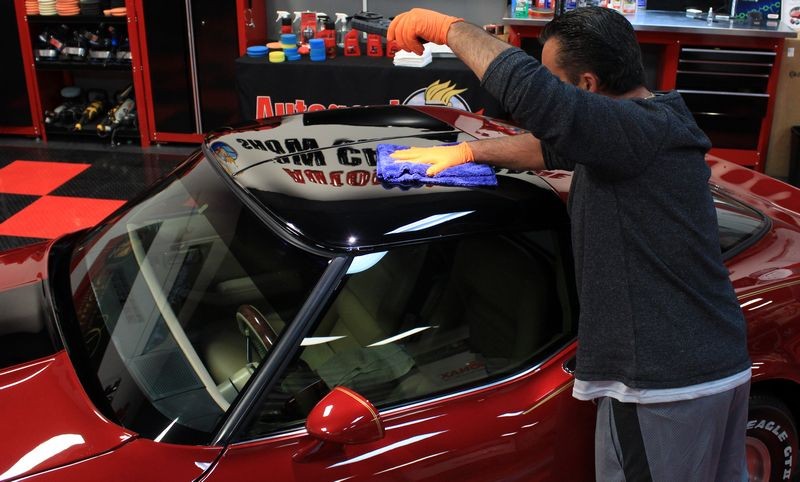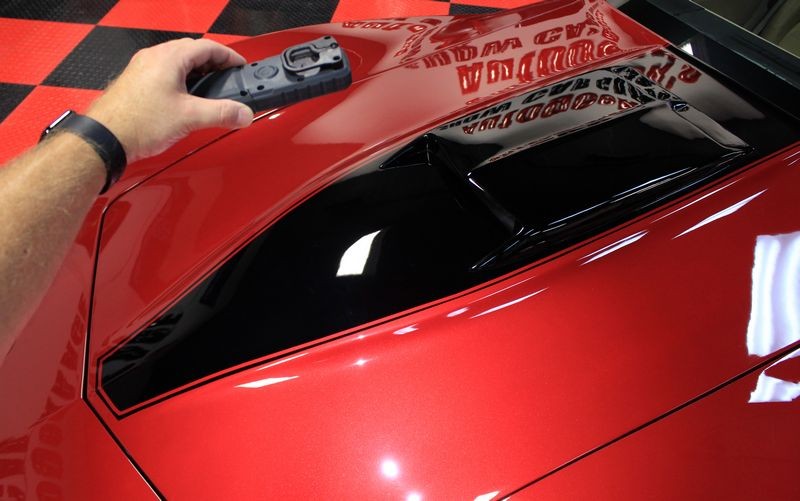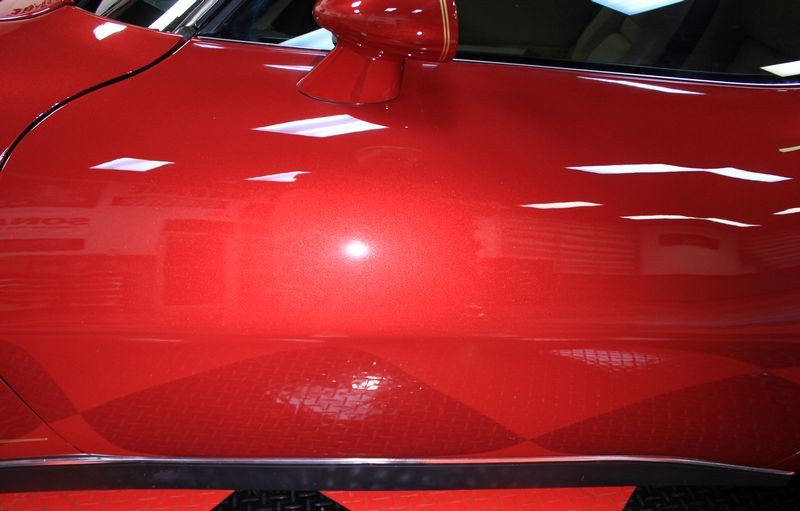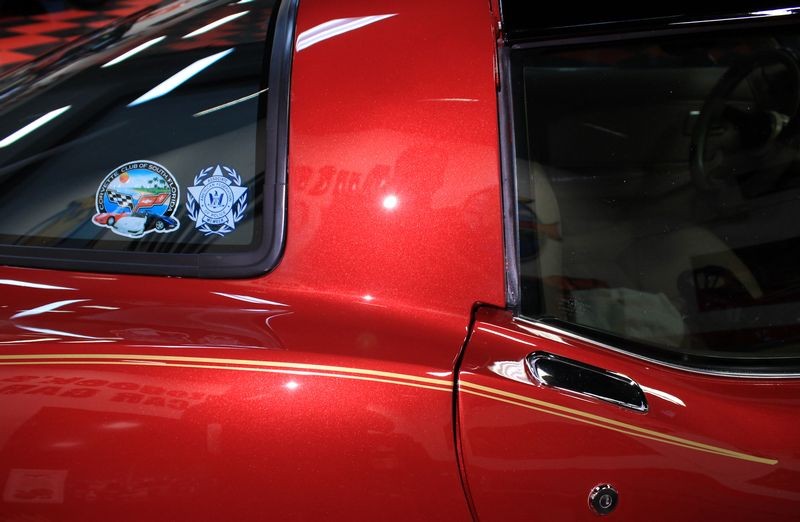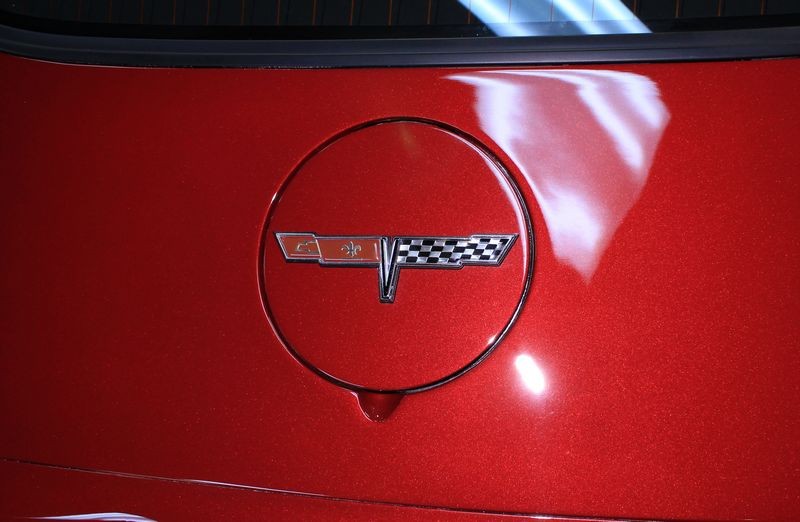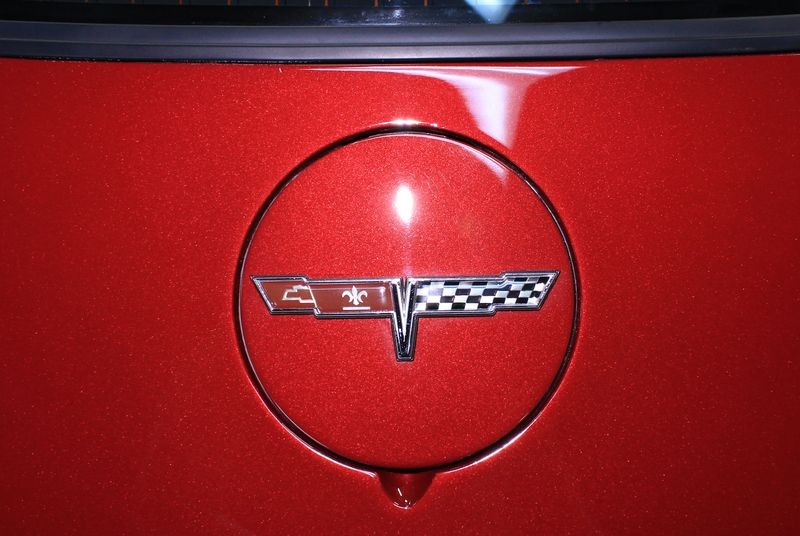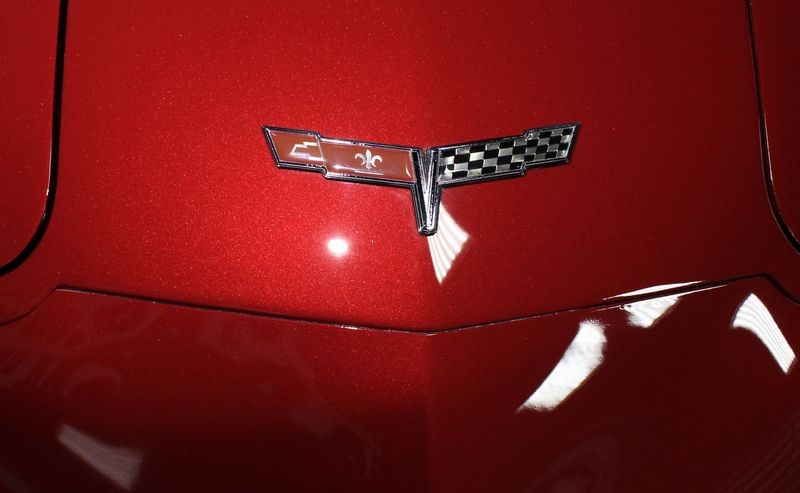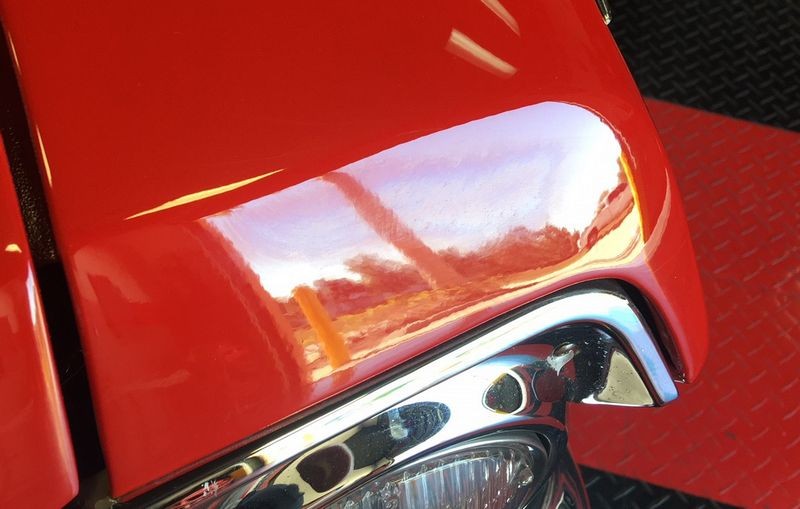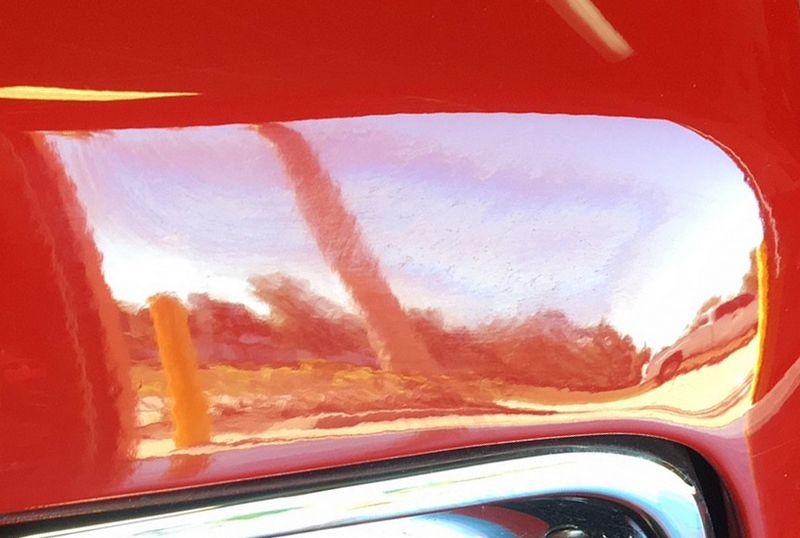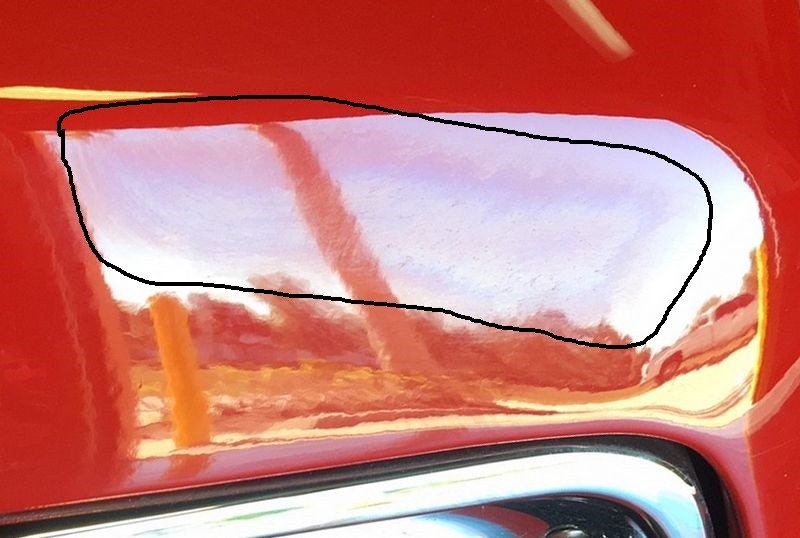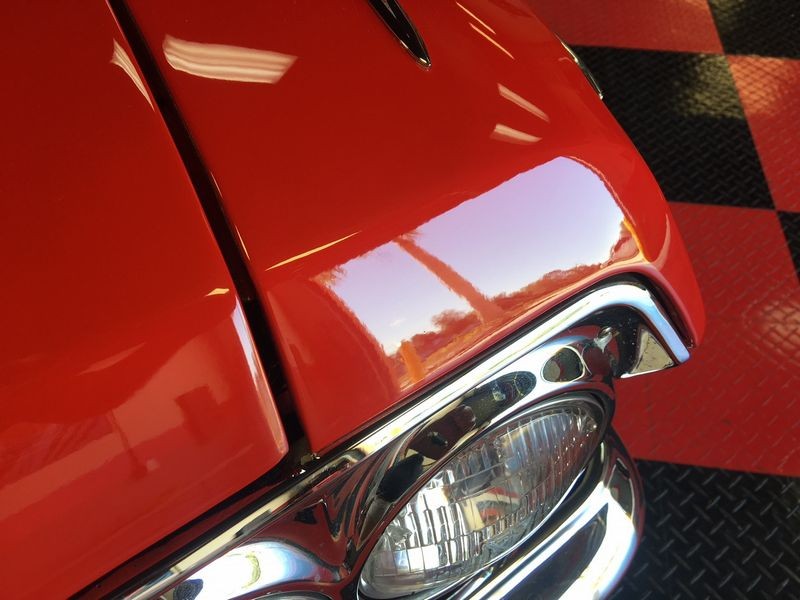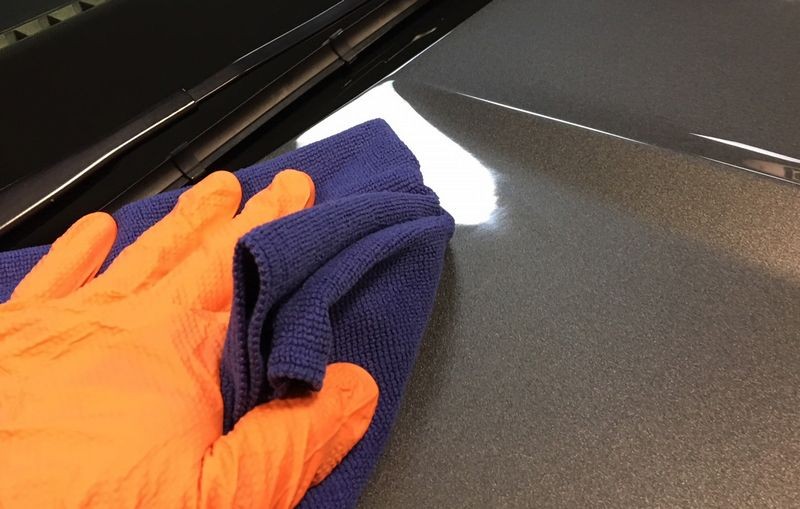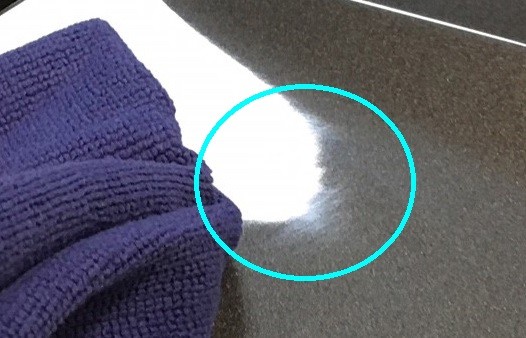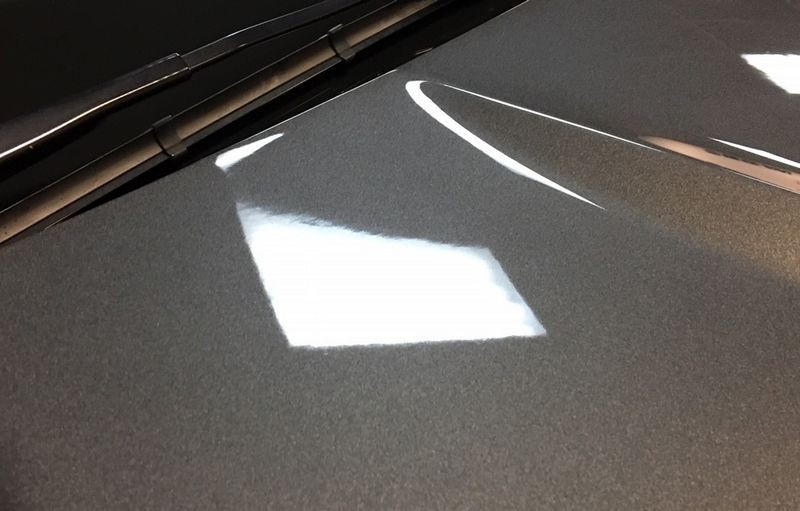And gee.... I have an article on bald wipe towels too....
Notice how many I have? It takes more than a few to do chemically strip a car for a coating installation.
Microfiber towels for ceramic paint coatings - How to care for - by Mike Phillips
Read the below words carefully. Learn them. Live them.
It takes hours to buff out a car.... it takes seconds to put scratches in - Mike Phillips
Anyone that's buffed out a car before knows this to be true. Part of the reason is that modern clearcoats, while generally speaking are much harder than traditioinal single stage car paints, they still scratch very easy. Then... because they are hard, it takes hours to methodically buff out the car, panel by panel to remove the scratches.
So the wise thing to do is to NOT put scratches into the paint in the first place. I have a number of articles on this topic but this one has a twist as this one is focused on the towels you use to,
- Prep paint for a ceramic paint coating.
- Wipe off the high spots after installing a ceramic paint coating.
All said and done, from the time you start in the morning washing a car to the time you stop after the final buff, depending upon the size of the vehicle and the condition of the paint, it can take you all day to wash, correct, polish, strip and coat a car. So the last thing you want to do is to look at the finish when you're done and see swirls and scratches. This is where having dedicated coating prep towels and dedicated coating wipe-off towels is like cheap insurance.
Dedicated compound and polish towels
The microfiber towels you use to remove compound and polish residue are important and will be the scope of another article, suffice to say, this article is focused specifically on the towels you use to chemically strip paint AFTER any paint correction or paint polishing work has been performed and the towels you will use to remove high spots and give each panel its final buff.
Dedicated coating towels
Chances are if you're reading this article, (on a car detailing discussion forum), then you already have a nice collection of quality microfiber towels. If not, and you're just getting into car detailing, then trust me... you soon will have a collection of quality microfiber towel. There are a zillion types, colors, weights, sizes, etc. of towels on the market but in this article we're going to take a look at a 16" x 16" microfiber towel from GYEON called Bald Wipe.
GYEON Bald Wipes
What's so great about GYEON's Bald Wipes? A couple of characteristics.
1: Flat weave design.
Instead of a fluffy weave like a lot of towels these towels have a flat, tight weave. This makes it a LOT more difficult for contaminants to bury in, or embed inside the fibers because simply put, there's no place to hide. Not only does this help prevent accidental contamination it makes inspecting your towels faster than inspecting fluffy style microfiber towels.
2: They are somewhat stout.
Now that can sound like a negative when working on scratch-sensitive clearcoats paints that are in pristine condition but remember - these are microfiber so they are soft to the touch, just stout in their girth or mass. It is this stoutness that makes them more manageable when wiping. It's easier for you to hold and push or pull the towel over the surface. Soft limp towels tend to roll over into themselves and then you're fighting yourself and the towel trying to use it.
3: Low to no linting.
The last thing you want to do wiping paint at any stage of the paint polishing, prepping or final wipe stages is to see your towel is leaving lint behind.
Heck any clean soft towel can be used, I'm just trying to share a specific towel, with a specific design to help you do your work better, more effectively and faster. So take from this article what you will.
What about ceramic paint coatings that harden and crystalize?
Yeah that's a popular topic and it is true, some coatings, harden in your applicator cloth and if they are hardening in your applicator cloth it only makes sense that the coating is also hardening in your wipe-off towels. I read about some guys that after using a microfiber towel to wipe-off high spots and give the paint a final buff will then either throw the towel away or delicate it to things like checking your car's engine oil level. That is an option and if it's in your budget I say go for it. Or if you detail professionally, that is detail for money, then build in the cost of the towels you're going to throw away into what you charge your customer so you're not losing money each time you detail a car and throw your nice towels away.
Another option is to immediately after you use your towel is to wash it and the hope and pray and even cross your fingers that the majority of whatever was on the towel loosens and washes and then rinses out. My experience is this works. The key to success with this step starts with the application of the coating.
First - Don't waste product.
Technically you're only supposed to put on
small amounts of ceramic coating to panel or a section of a panel at a time and this is key
--> work the coating over the surface until you see it disappear. Now THINK about it. If you work small amounts until it disappears into the paint and the solvents evaporate off, (called flash time), doesn't this mean there's NOTHING to wipe-off or remove? As in nothing to wipe off and get onto your wipe-off towel? Make sense to me. That said, of course you're going to have high spots as you always have these at the end of a pass where your lift your applicator off. Happens to me and I'm sure it happens to the best detailers in the world. But the BIG PICTURE is - if a ceramic paint coating is correctly applied there should be very little of the ceramic coating solids to be wiped-off and thus impacted onto your precious microfiber coating towels.
Make sense?
Second - Wash immediately
Next - IMMEDIATLEY after you are done wiping down the car to remove high spots and give the painted panels their final buff, (the wipe that maximizes the gloss and shine), then IF you can, wash your towels. That is, if you have a fixed location, take your towels over to your washing machine and make a dedicated wash load washing only your microfiber towels for prepping paint and wiping off high spots and the final buff. Then dry them by themselves and then inspect them, fold them and store them for the next project.
If you're mobile
If you're mobile or if you don't think you can immediately wash your microfiber towels, your schedule doesn't permit (or the wife is washing her lingerie), then the next best thing you can do is to dunk your used microfiber towels into a mixture of water and microfiber detergent and then as soon as you can, wash and dry these towels.
APC vs Microfiber Detergent?
Most of the recommendations I read in the blogosphere for soaking microfiber towels used for ceramic coatings is the recommendation to soak your towels in a solution of water and All-Purpose-Cleaner. Kind of seems harsh to me for a soft plush microfiber towel you want to keep soft and plush, plus absorbent. So here's what I do and it makes more sense to me. I think
PICTURE 11 will tell the story.
Let's get busy...
So lets take a look at an effective but simple way to wash, dry, inspect, fold and store some coating towels. If you keep your process simple you're more likely to do it and then it has real impact over time.
Mix a solution of water and a quality microfiber detergent. Common sense tell you to make sure the bucket is clean to start with.
I use the glug-glug method for a lot of things, this is no exception but do use prudence, pour in a few ounces.
As you work through the project, take a used towel and place it into the bucket of wash solution.
Make sure to dunk the towels so they are soaking and being penetrated by the detergent and whatever magical chemicals are inside of it. The bid idea here is to both saturate the towels with water and detergent so they can do their thing of breaking down substances but to ALSO seal the towels away from oxygen which of course causes drying. Part of the way this works is it prevents the coating substances from drying since you're removing oxygen from the equation.
Normal protocol now days here at Autogeek is I use BLACKFIRE Microfiber Detergent. Choose a brand you trust.
Soaking...
Washing
After you've completed the project so you're done creating new dirty towels, take the bucket of towels and microfiber solution to your washing machine.
In this example I'm washing 8 towels, so this qualifies as a Small Dedicated Wash Load. I'll use the WARM setting on the washing machine. Everything cleans better with warm and hot water versus cold water. Don't believe me? Next time you replace the starter motor on a 25 year old Ford F150 try getting all the greasy, black grimy sludge out of the pores of the skin on your hands using only cold water. Warm water is good, it helps to the cleaning process. Hot water can damage delicate microfiber filaments so don't use the hot setting.
Select the heavy option for a good full cycle of agitation.
PICTURE 11
Now dump the towels and the microfiber detergent solution directly into the wash basin. See why I prefer to use a microfiber detergent instead of an APC to soak my towels in?
After they are washed, next dry the towels...
Choose the appropriate drying time for the size of the load you just washed
Choose a warm to cool heat setting to dry the towels. Don't use the high or hot setting as this can overheat the microfiber filaments and basically bake them.
Inspection, folding and storing
Before you inspect and fold your microfiber towels, be sure to clean the surface that you're going to place the towels on. I fold the towels here at Autogeek on our stainless steel countertop on the workbench and before doing so I wipe the countertop clean wit a glass cleaner and a basic microfiber towel.
Think clean - Work clean
If you take clean towels and place them on a dirty table or counter you just undid all your hard work and contaminated your towels. So think clean and work clean.
Inspect your towels
If you have not read my article on towel inspecting or watched the video, you can check it out
here.
First inspect visually
I like to put some light on my inspection area and this is another great use for the
SCANGRIP Sunmatch Swirl Finder Light
The swivel base has a magnet in it to secure it to the steel overhead hutch, perfect for my inspection process. This is my method, everyone has to figure out their own method.
Second inspect both sides of the towel with your sense of touch.
Make sure to wash your hands first so you don't contaminate the towels while feeling them.
Pick out and remove all contaminants
After a towel passes your inspection, fold and store the towels in a clean container to keep them uncontaminated and ready for the next project.
High quality towels are not cheap and you get what you pay for.
Quality towels are TOOLS --> learn to take care of your tools and your tools will take care of you.
Mark your towel container so no well-intentioned fool ruins your day.
Just to note, the GYEON Bald Wipes do come in a re-sealable bag but this isn't a long term solution for proper storage.
On Autogeek.com
GYEON Bald Wipes - $6.99
As I read the store page for the GYEON Bald Wipes at the writing of this article there's not a bulk option to buy by the dozen. I'd suggest getting a dozen so,
A: You always have enough towels to do the job.
B: You have enough towels to make a small dedicated wash load.
BLACKFIRE Microfiber Cleaner & Restorer 128 oz.


